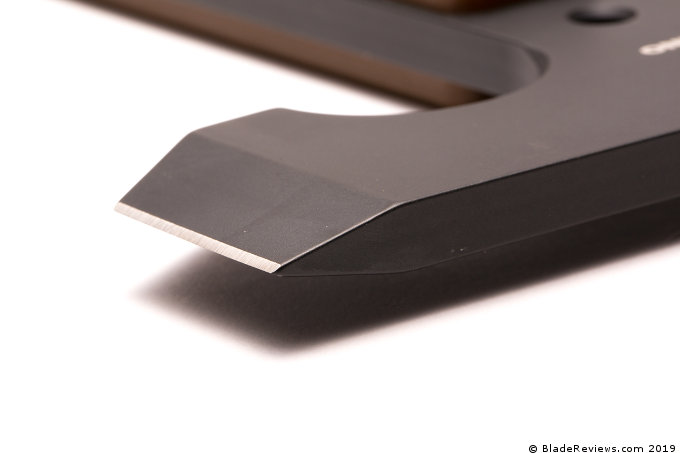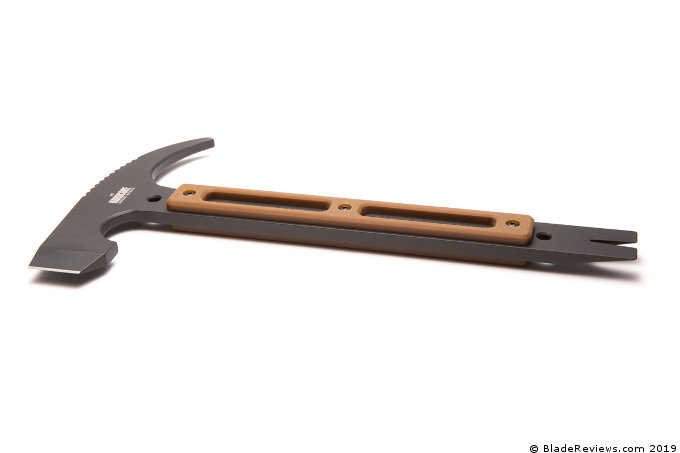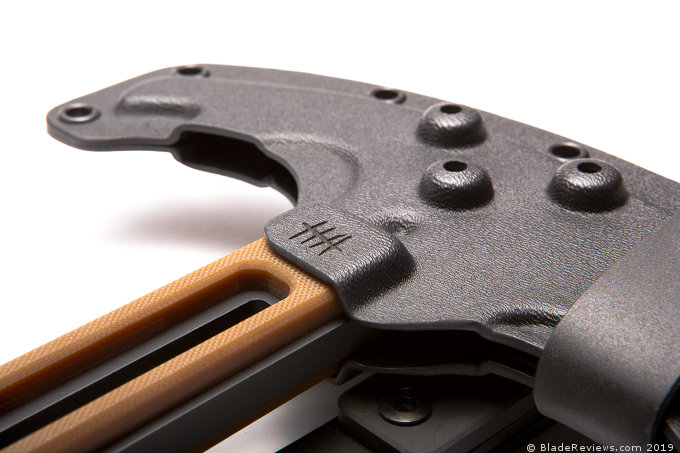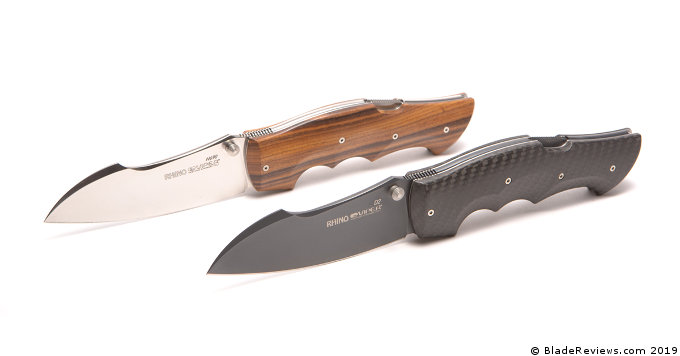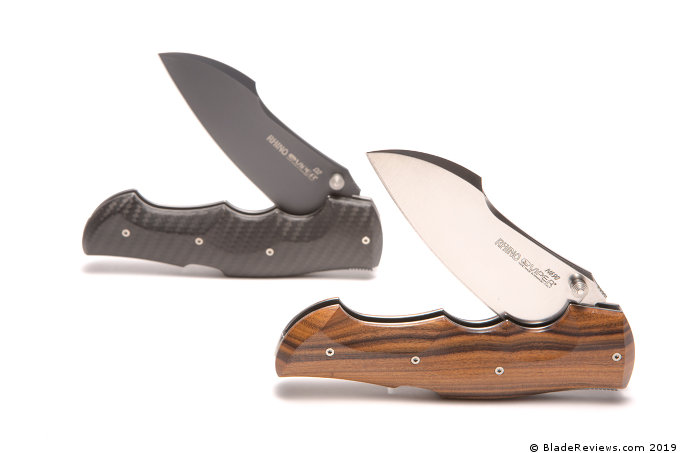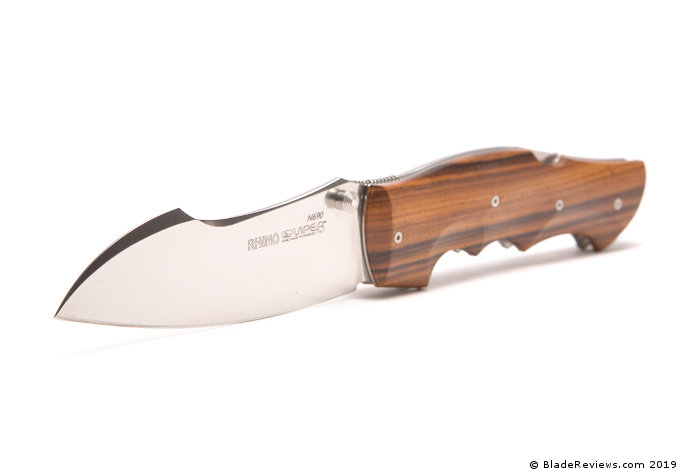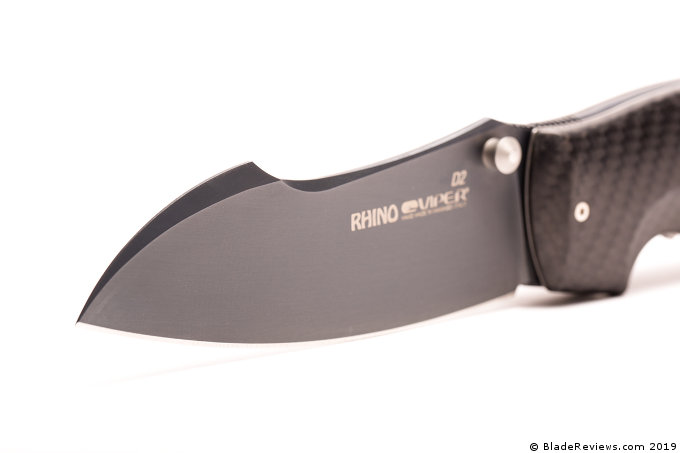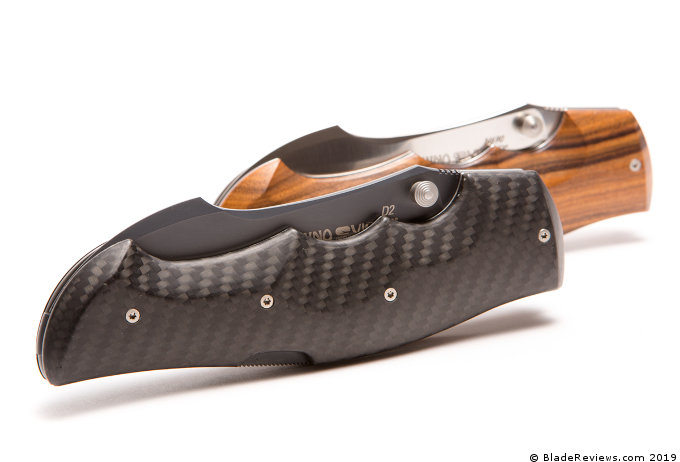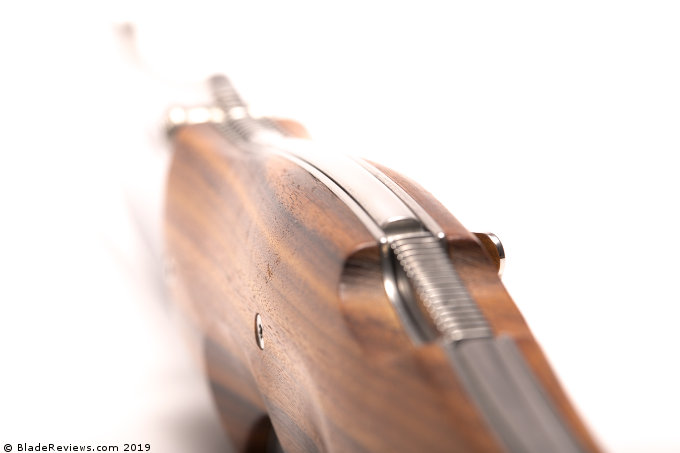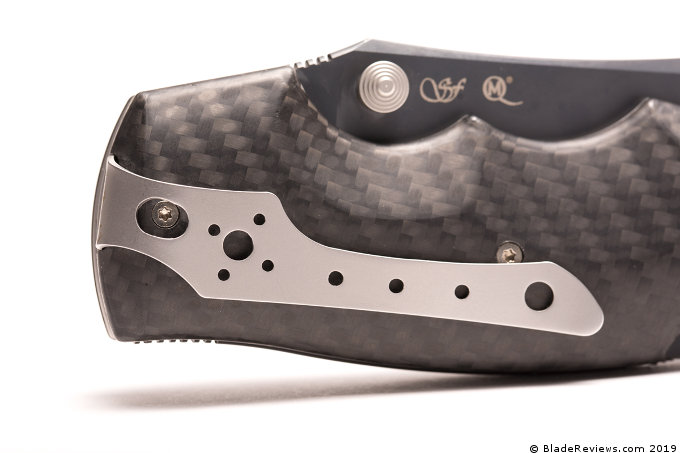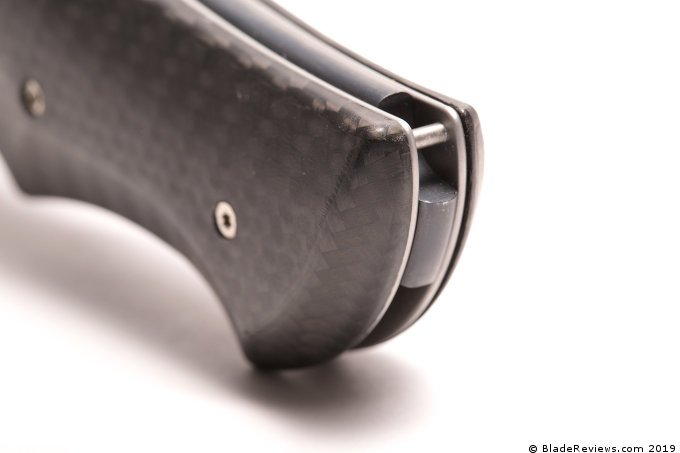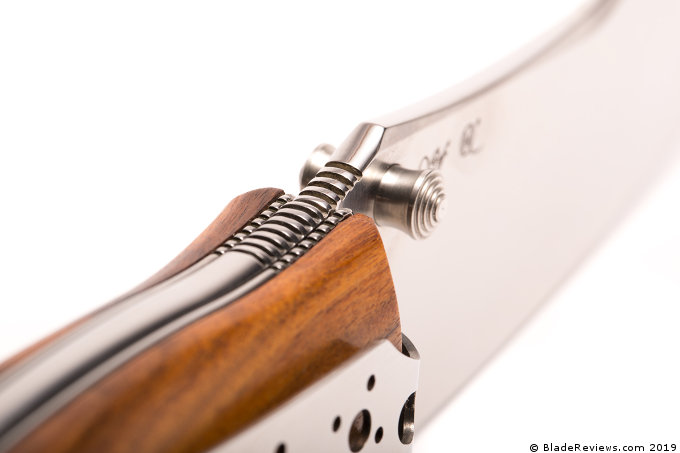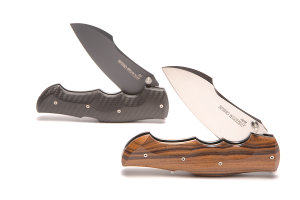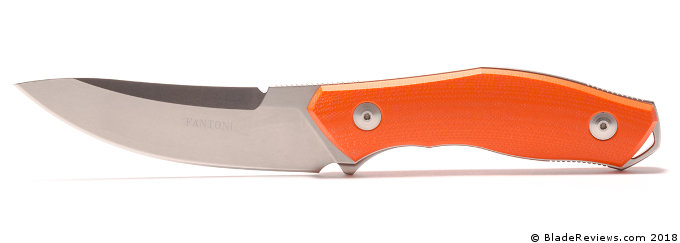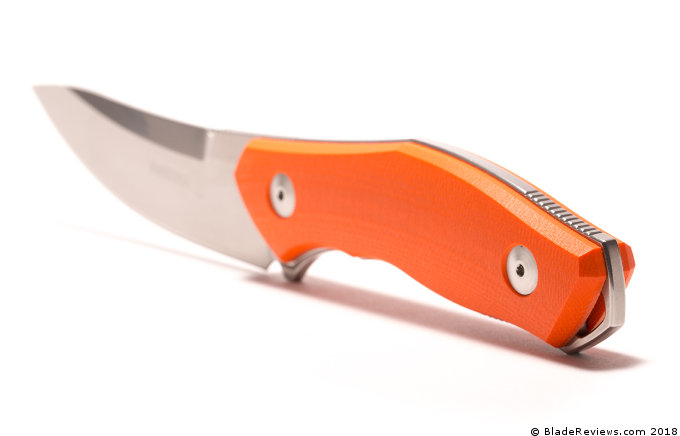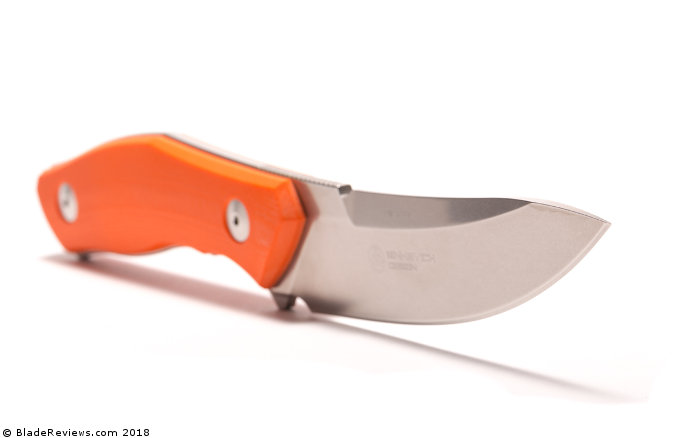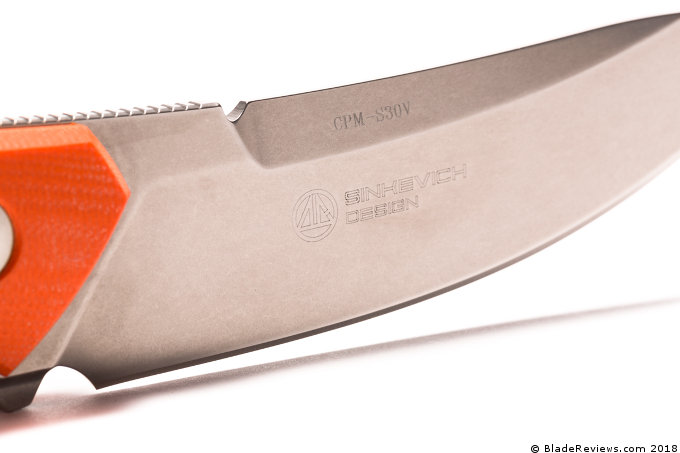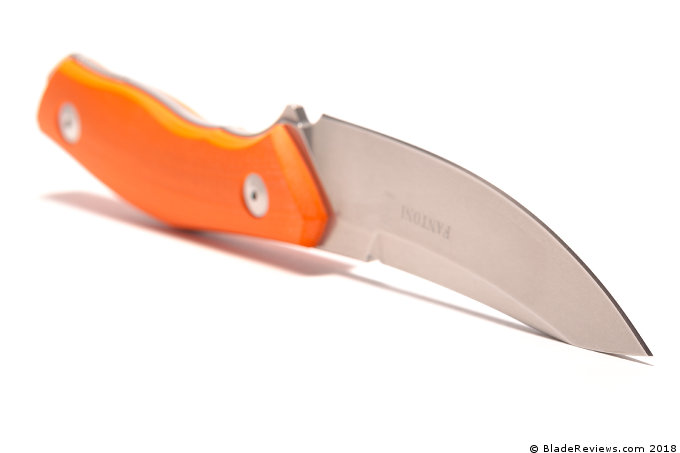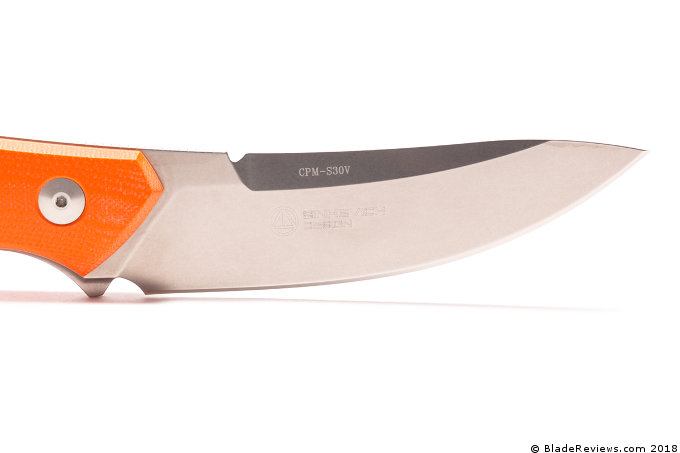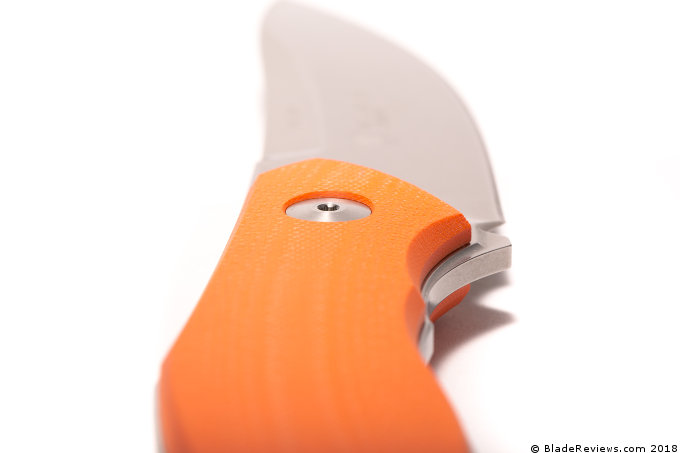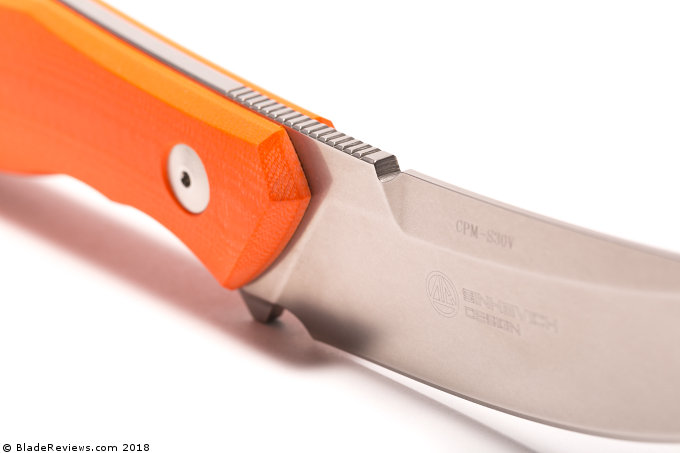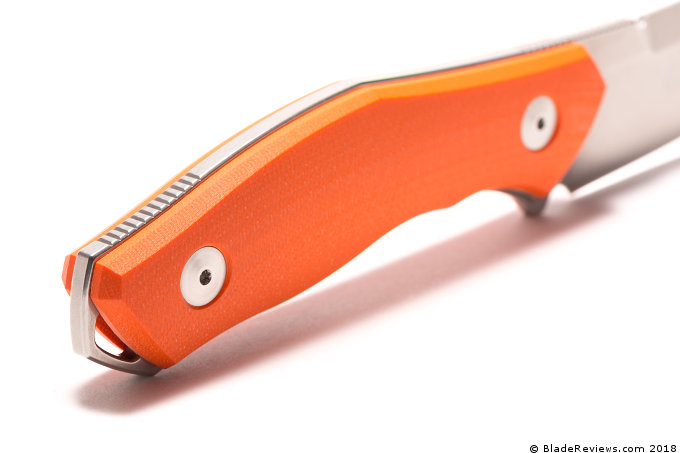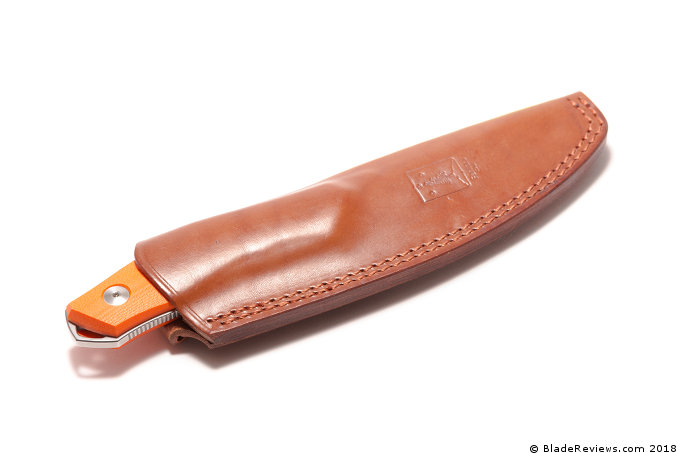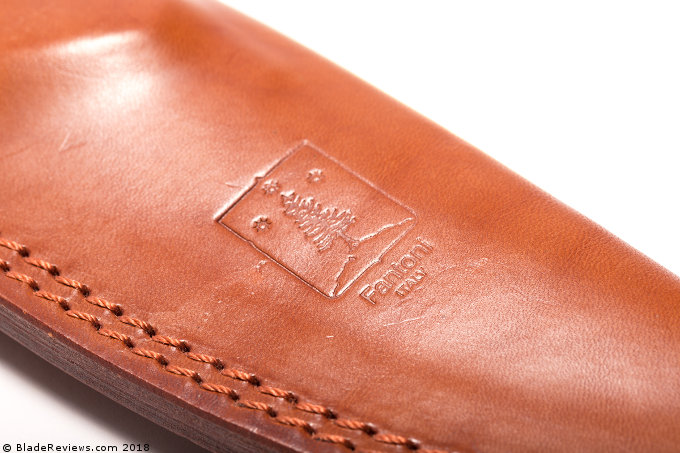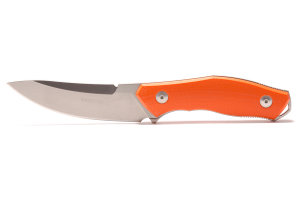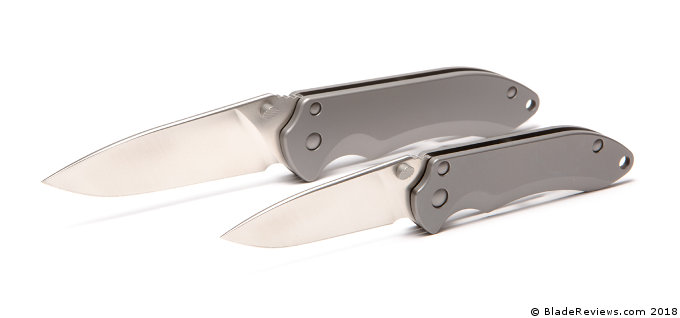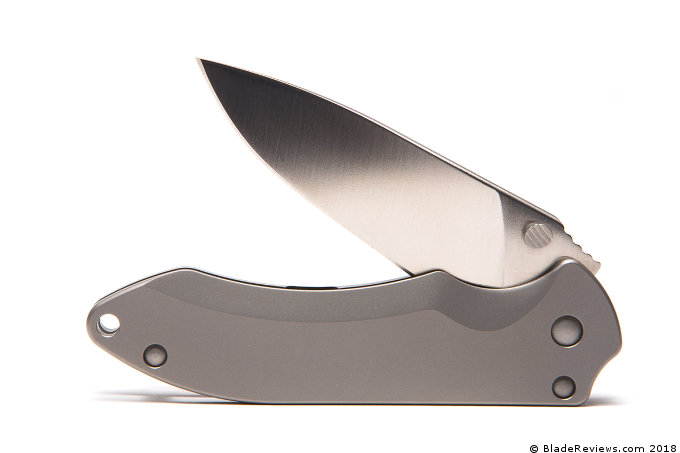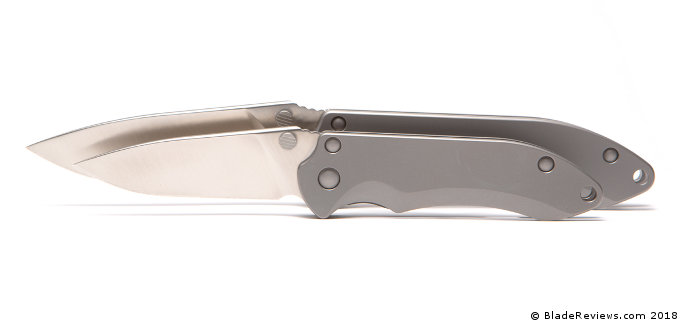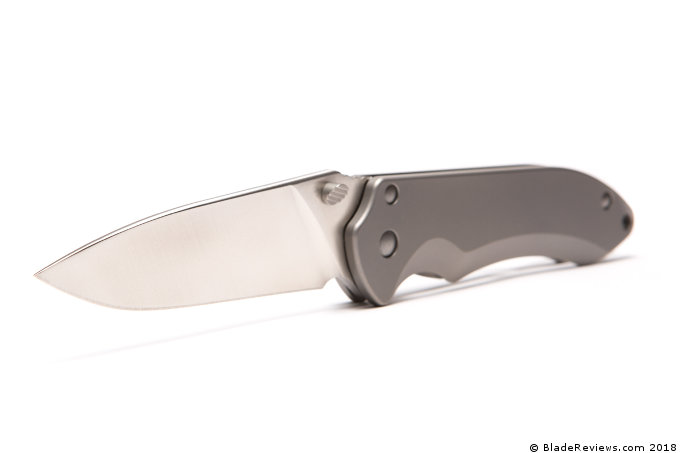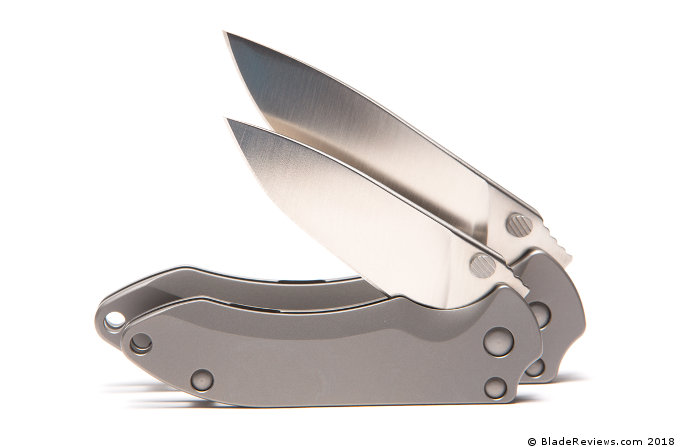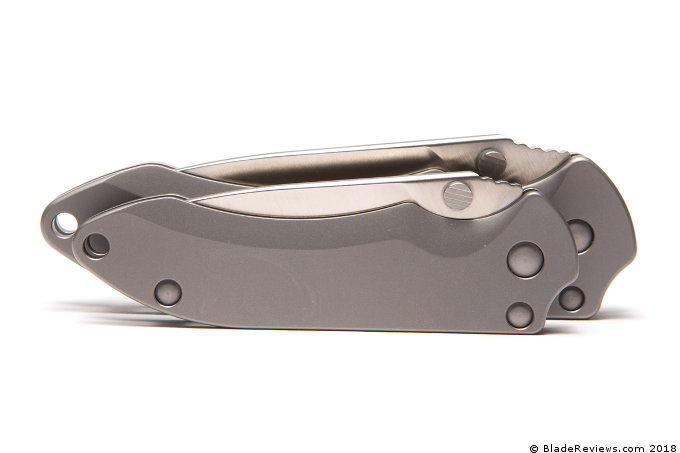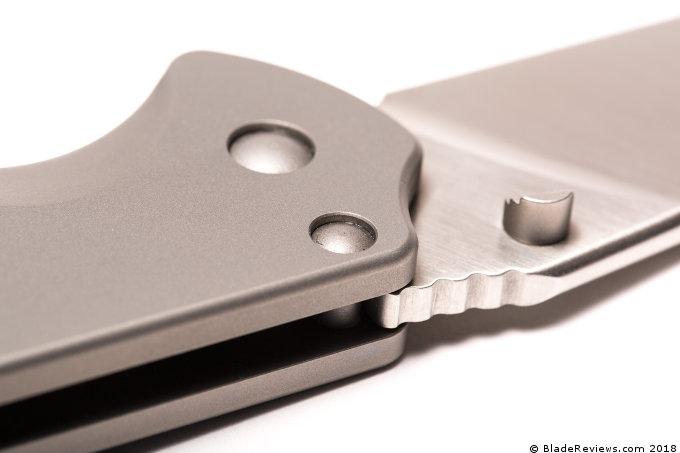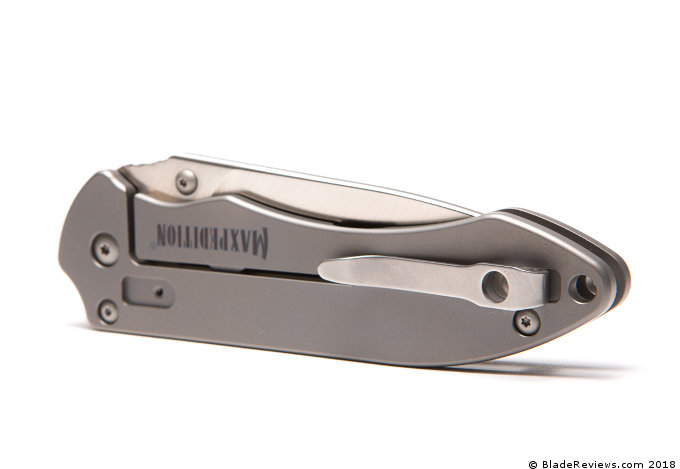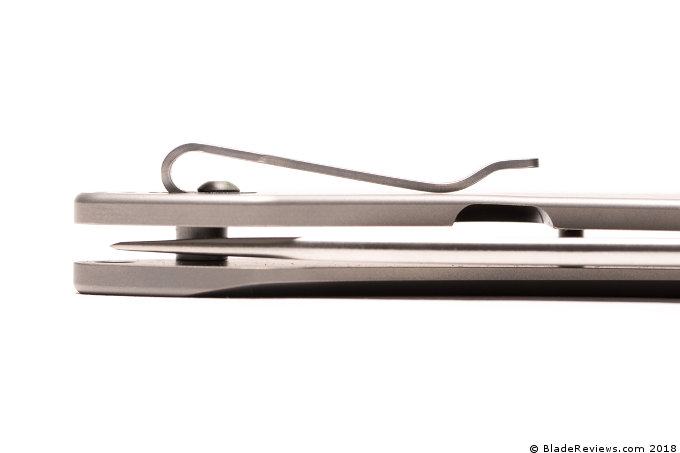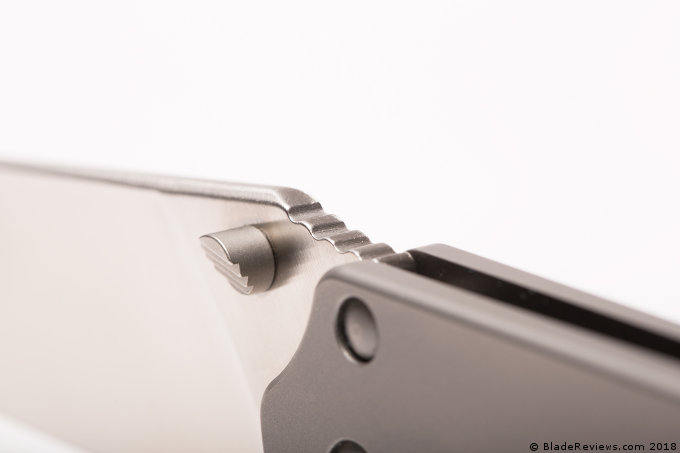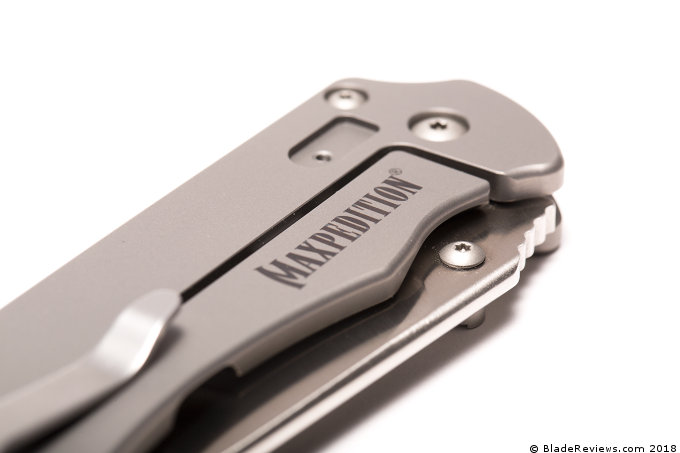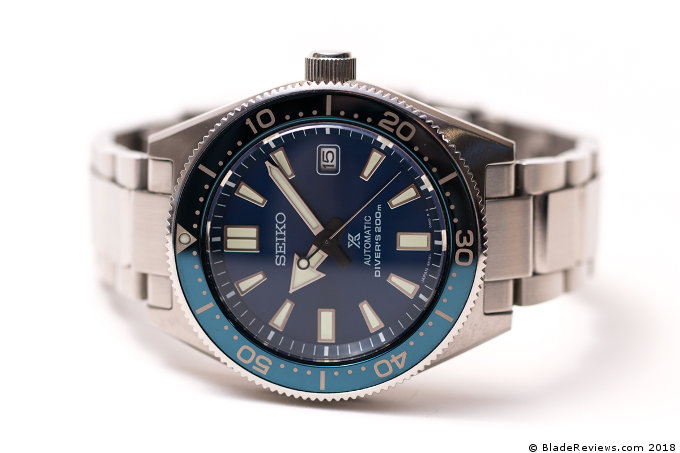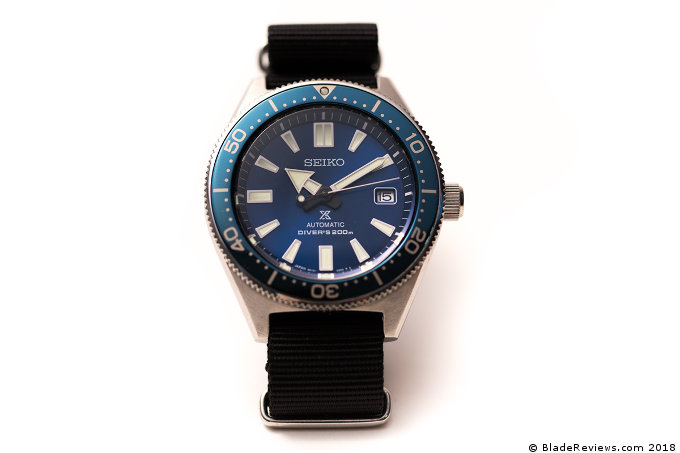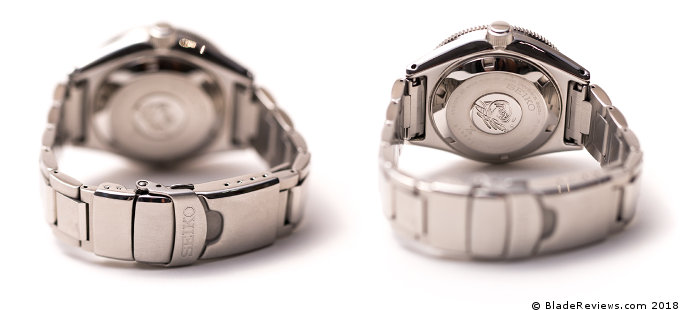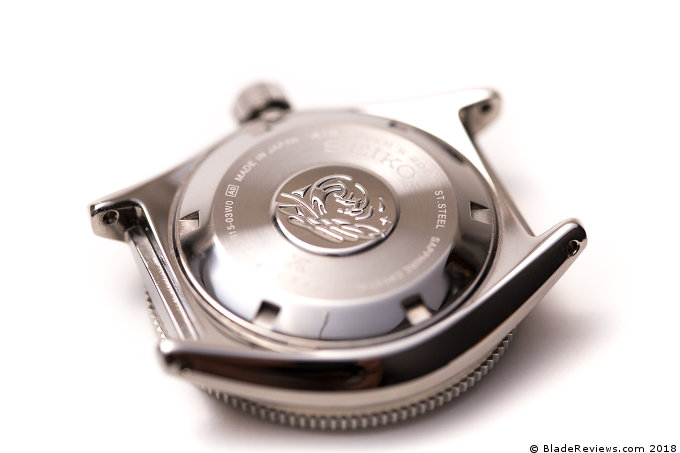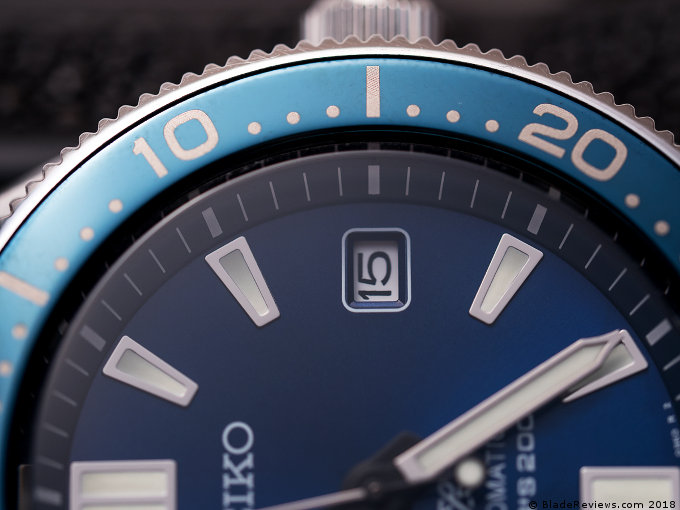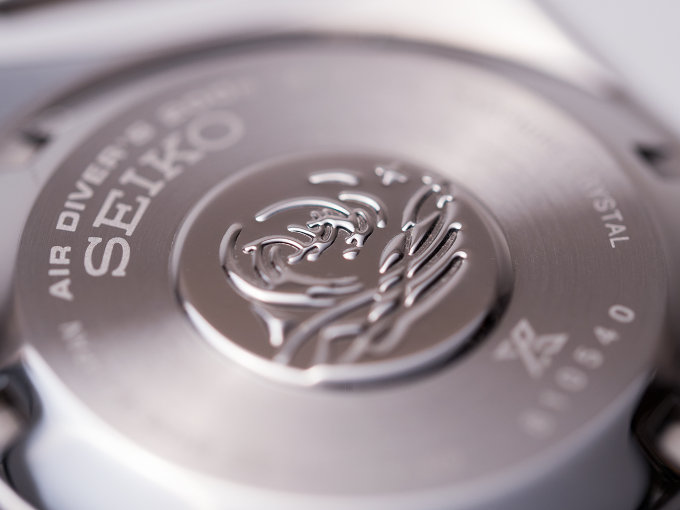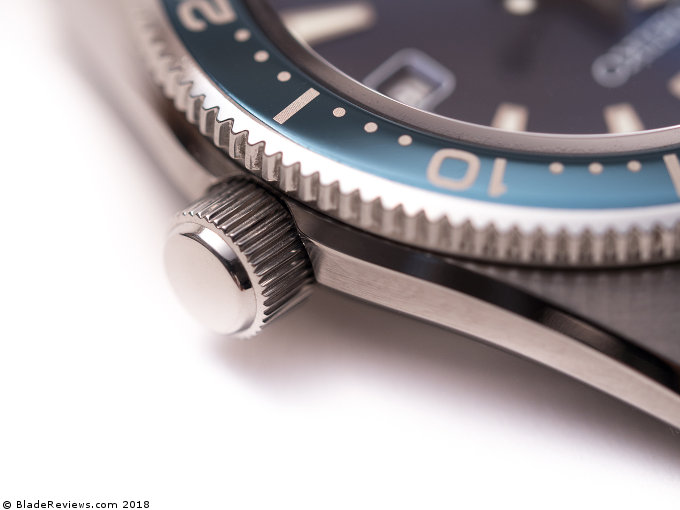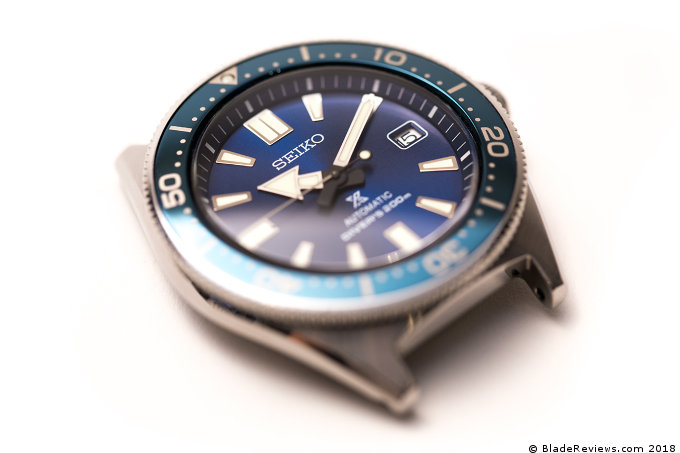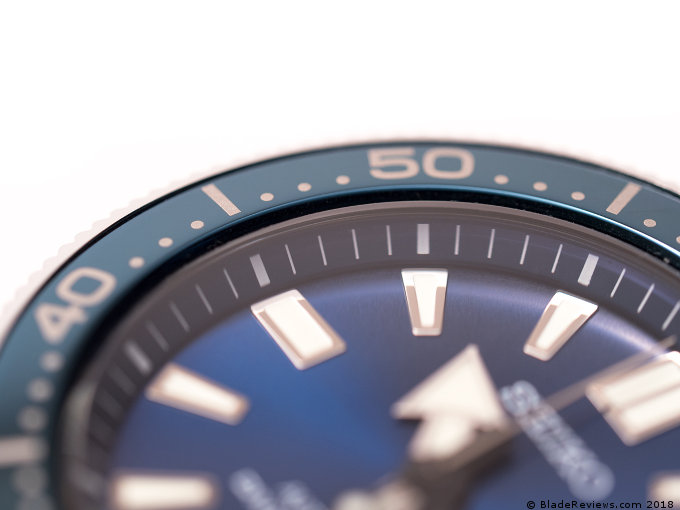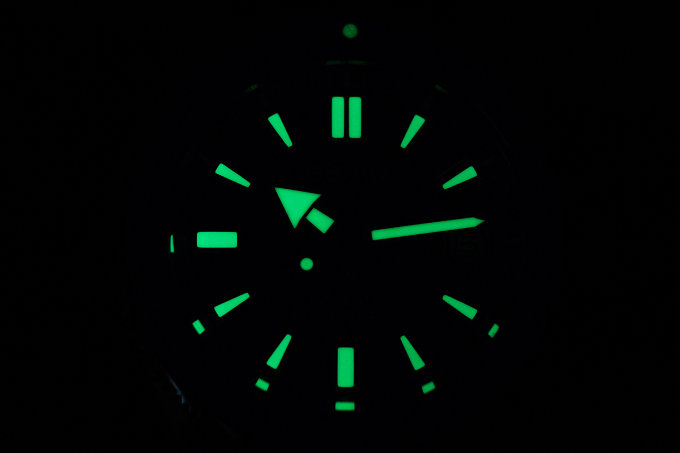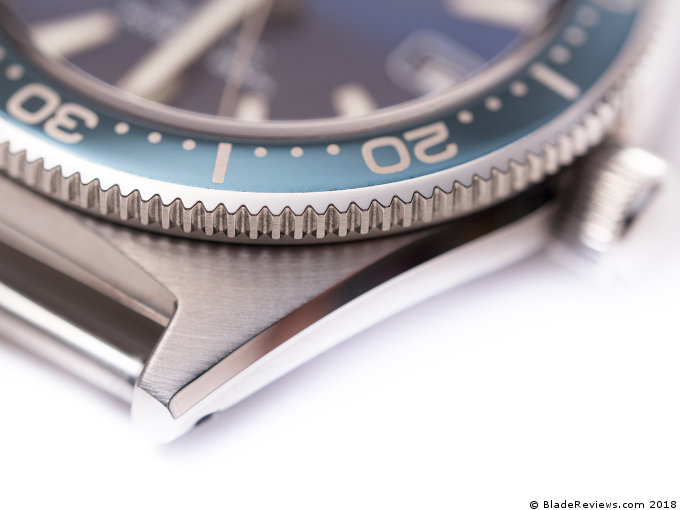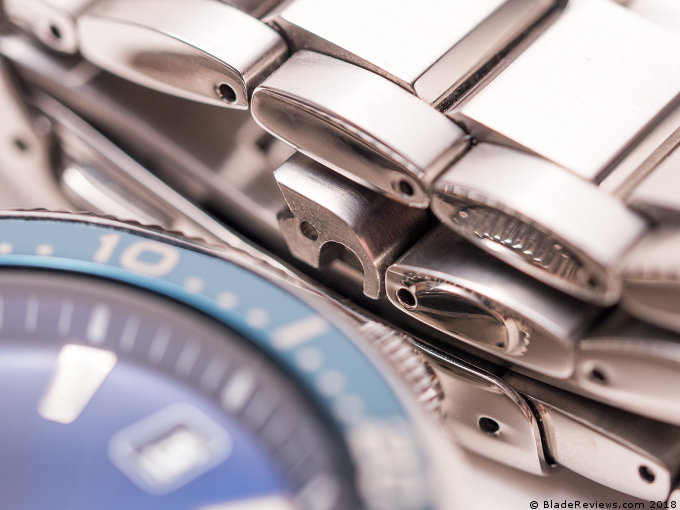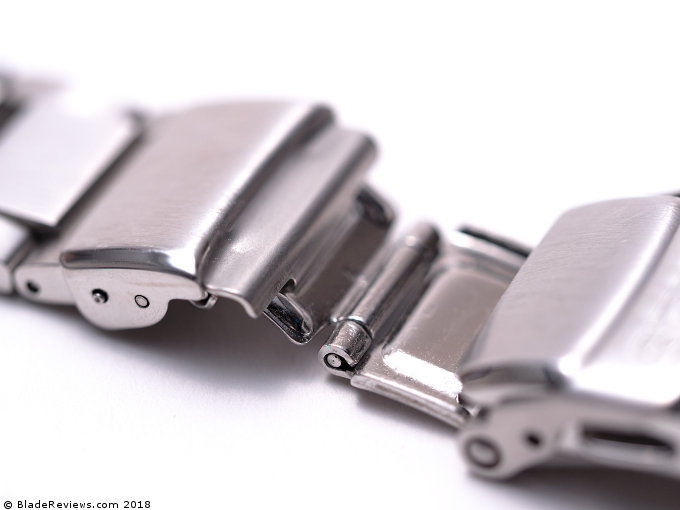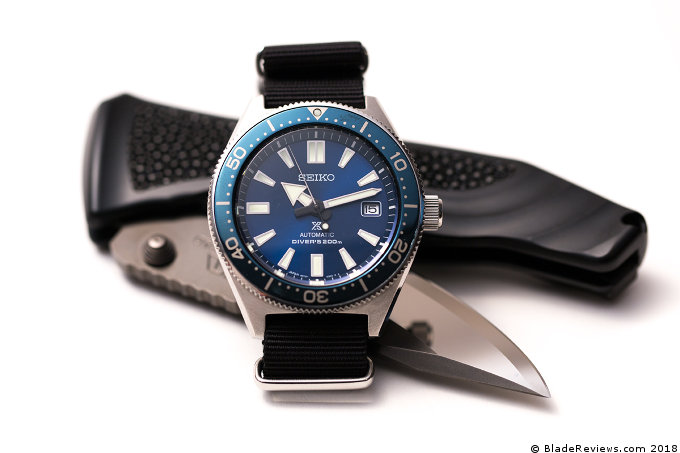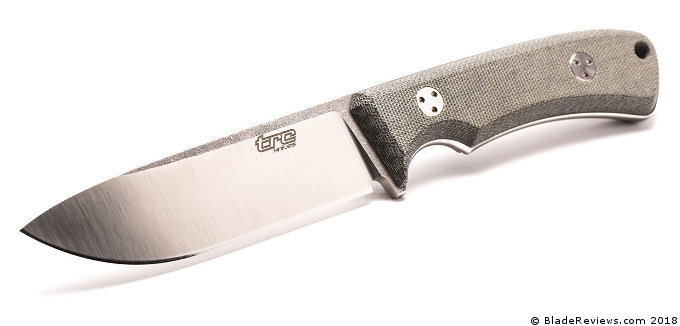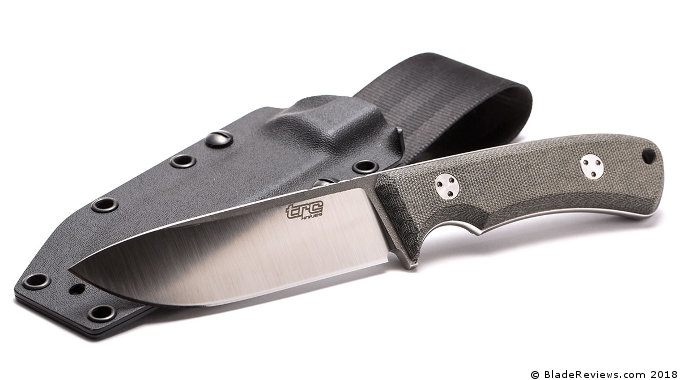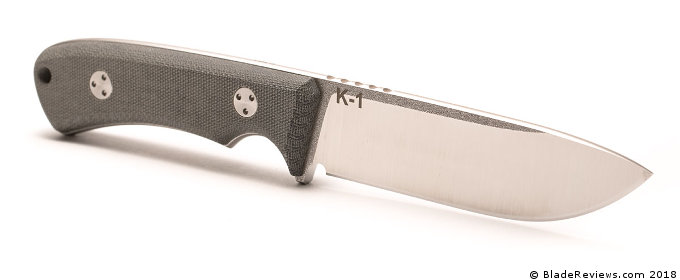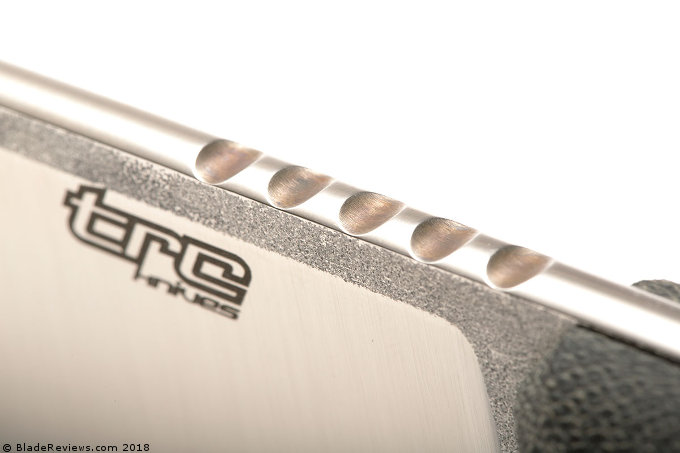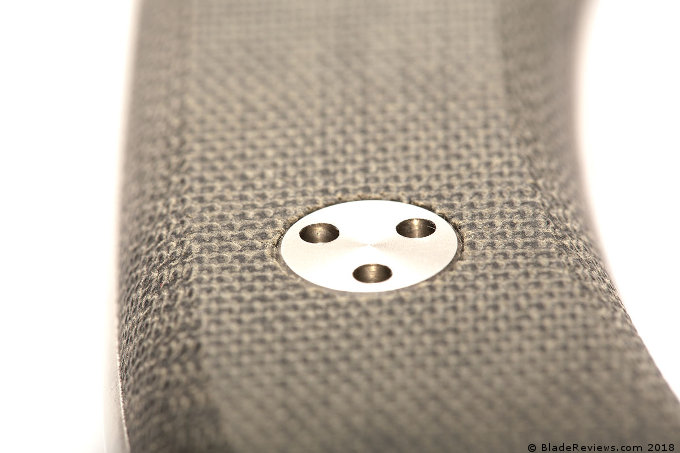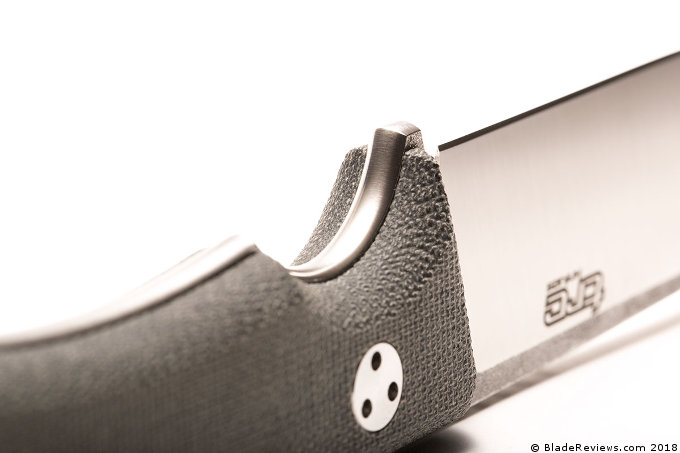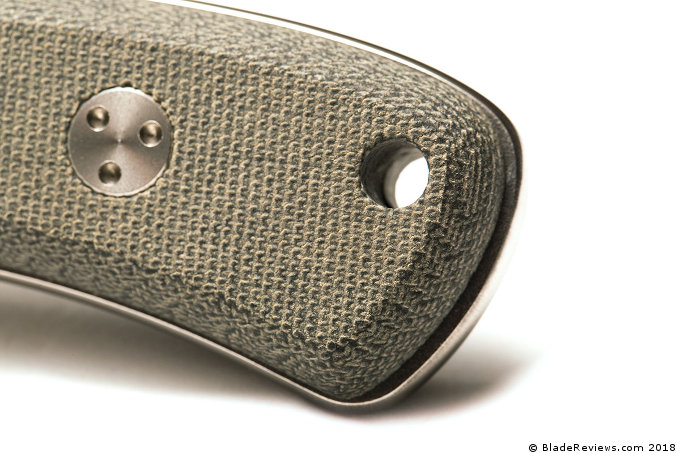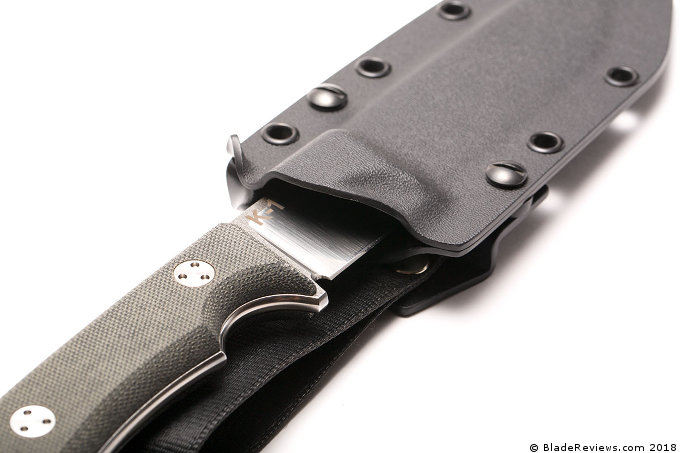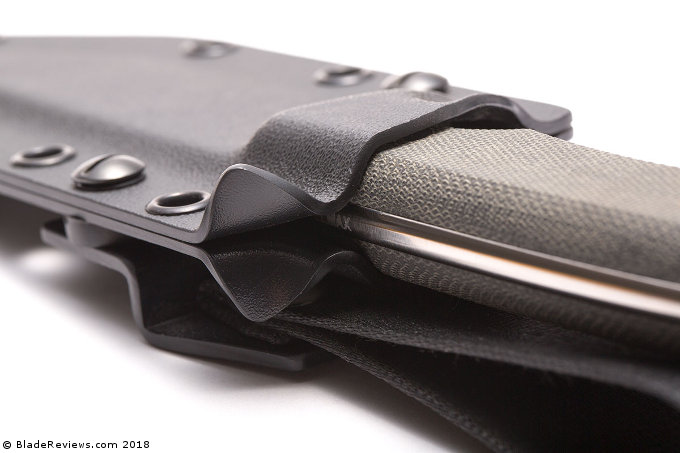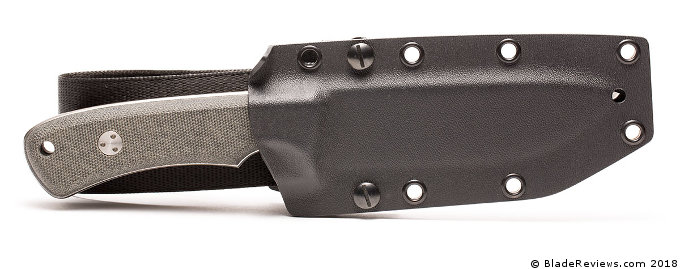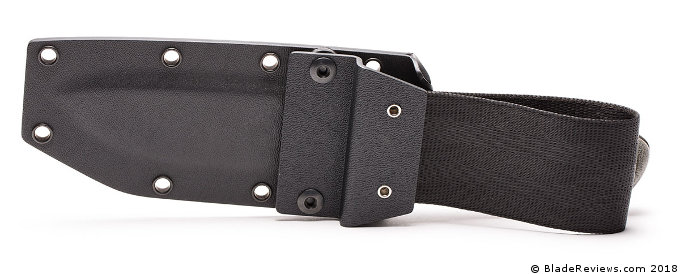The Hardcore Hardware Australia MFE01 Rhino is a medium sized utility tool. It was designed by Australia based tool manufacturer Hardcore Hardware in conjunction with SOER, the Special Operations Engineer Regiment which supports the Australian Special Operations Command or SOCOMD. SOER specializes in Chemical, Biological, Radiological, Nuclear and Explosive (CBRNE) threats.
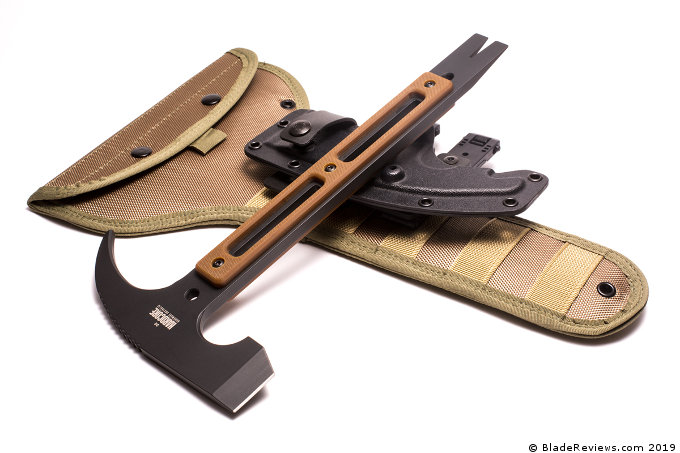
Buy the MFE01 Rhino at BladeHQ
No products found.
Their expertise also makes them an integral part of the Tactical Assault Groups (TAG) that were formed after the September 11 terrorist attacks that occurred in the US. With bases in east and west Australia, TAG is a quick response, domestic, direct action (offensive) counter-terrorism entity.
General Dimensions and Blade Details
The Rhino is made from a massive piece of D2 that’s just over 5/16th” (8mm) thick 12.6″, in length and 6.7″ at its widest. The total weight is 27 oz. To maintain ductility (toughness) during impact, the D2 has been heat treated to a lower hardness between 53-54 HRC. This seems sensible, being in the same range as similar sized, impact/chopping tools that have been around much longer such as hammers, axes etc..
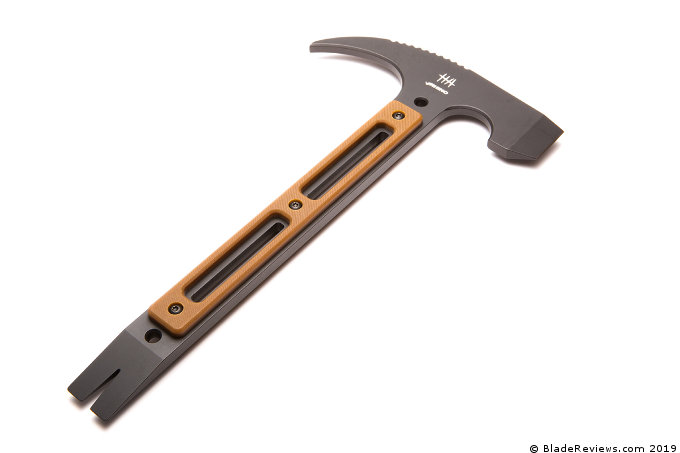
Since D2 is a semi-stainless steel, HHA has coated this, and all their gear, with a thick black, low glare PTFE coating (teflon). The Rhino is also be available in a tan PTFE coating. The company’s logo and model name is etched on one side of the head and the Hardcore Hardware Australia word-mark and steel type appears on the other.
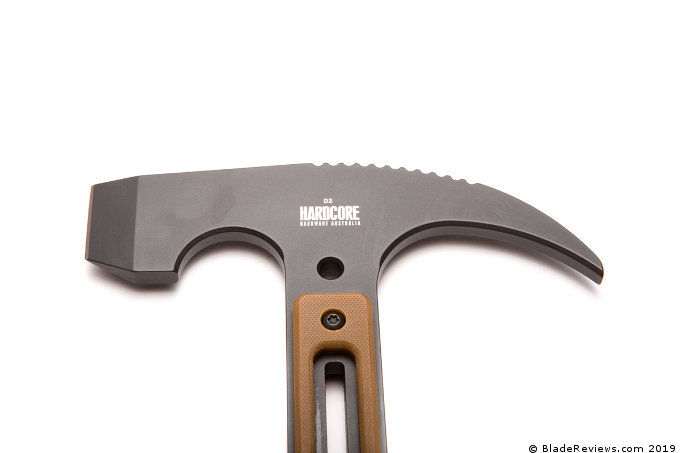
The MFE01 has three main tools. The front of the head has a bladed edge. This is different from the typical tomahawk as it has a much smaller cutting surface. The design focuses the impact force in a smaller area for a concentrated strike. With a steep bevel, it is proficient at splitting tasks. This geometry would be less likely to get stuck in softer materials like wood where a thinner blade is prone to.
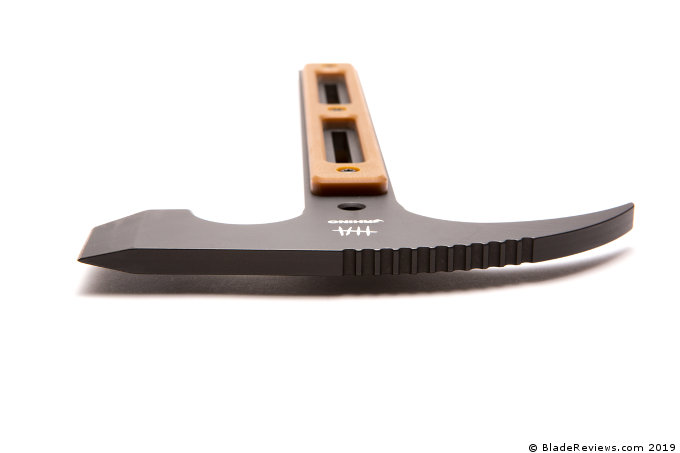
The poll (back of the head) is claw shaped for use as an impact or prying tool. The point isn’t sharpened which, is probably a good choice to help prevent self injury when bearing down on the handle.
The back edge is rounded like a claw hammer to improve mechanical leverage and has a row of jimping that grabs the opposing surface when in use.
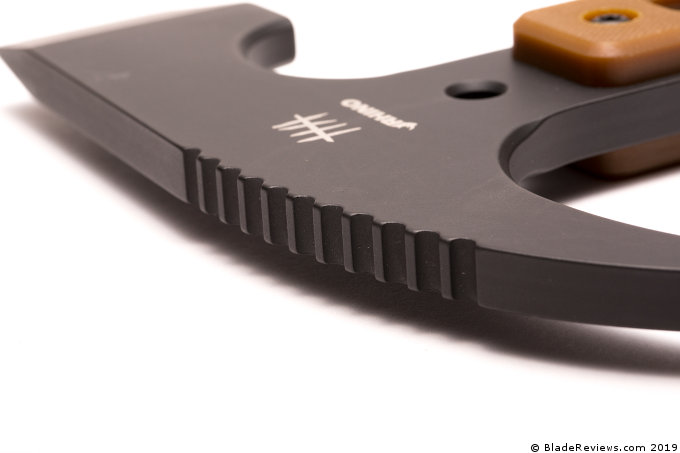
The jimping also adds traction when manipulating the third tool, the crowbar like pommel. This has a shallow angle resulting in a narrow tip that can be easily wedged into small spaces. A notch in the face will handle a variety of nail sizes making the Rhino great for opening crates or similar jobs.
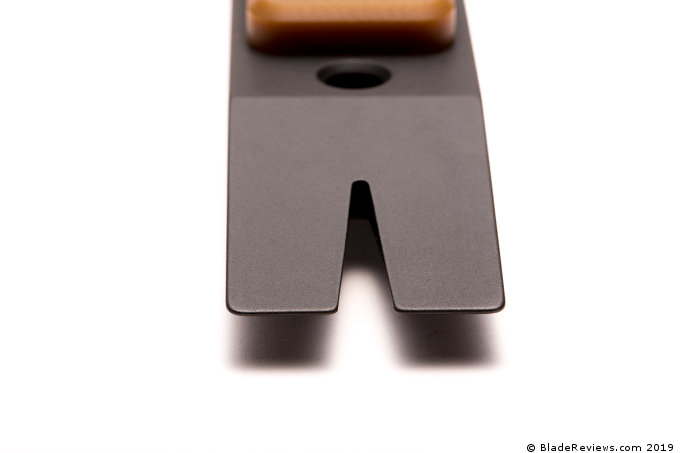
Handle
The handle on the Rhino is somewhere in between a full and partial tang. Because the tang travels out-to and beyond the scales it could fall into the full tang category. Alternately, large slots cut out of the center for weight reduction, may argue the latter. Regardless, the 5/16th inch thickness coupled with the conservative hardness should make this tool difficult to break.
While the handle slots improve weight they can incidentally be used as large shackle wrench or to thread 550 paracord for added traction. A paracord wrap could also be an alternative handle covering if you remove the scales. The thick G10 slabs echo the tang’s slots, sharing the same weight saving, grip-adding properties. Traction is further improved with a peel-ply texture. The scales are attached with large torx fasteners and come in a brown or black color. Holes at the base of the head and pommel can be used to form a d-lanyard for extra security.
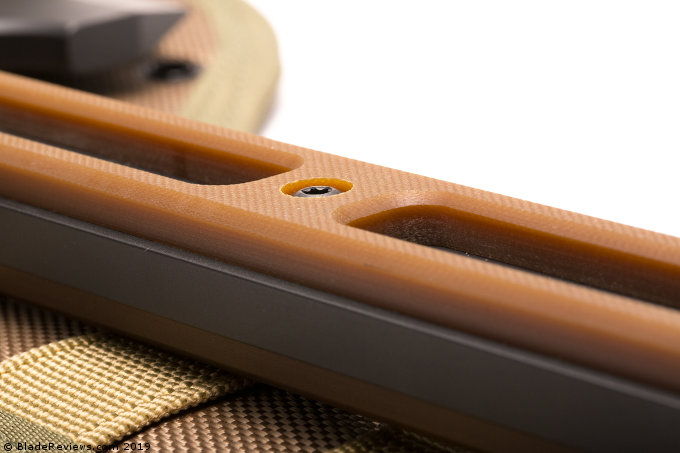
While the slots are great for grip, the over-all handle feels a bit boxy and is probably much more comfortable when wearing gloves. It would be nice to see some contouring for added comfort. Additionally the slots make the Rhino resonate, making a pinging sound when using it, especially when striking something with the head’s flat. Sound probably won’t matter to most though, seeing as the Rhino doesn’t tread quietly. Despite these criticisms the over-all dimensions and weight distribution make it feel nimble and controllable when leveraging all the tools.
Sheath / Carry
For carry the Rhino comes with two options. The first is a large 1000 denier Cordura pouch. This seals with a velcro flap and snaps, completely enclosing the tool.
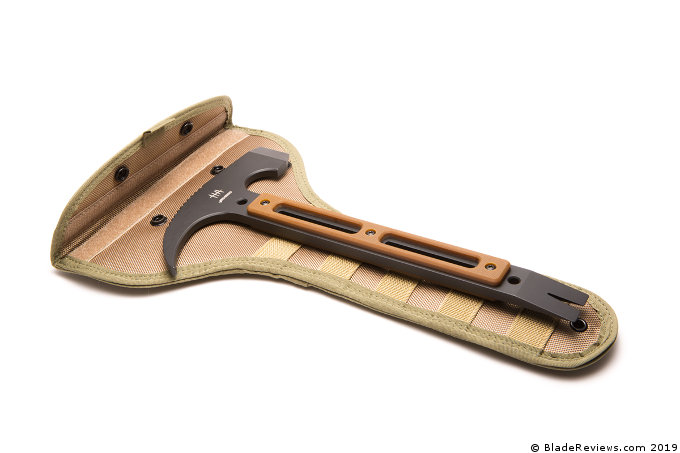
The back side has a ladder of PALS webbing and a full length strap with a snap making it MOLLE compatible. The front side also has a ladder for attaching other equipment. An eyelet at the top corner and base allow for cord to be tied on, making a handle or sling.
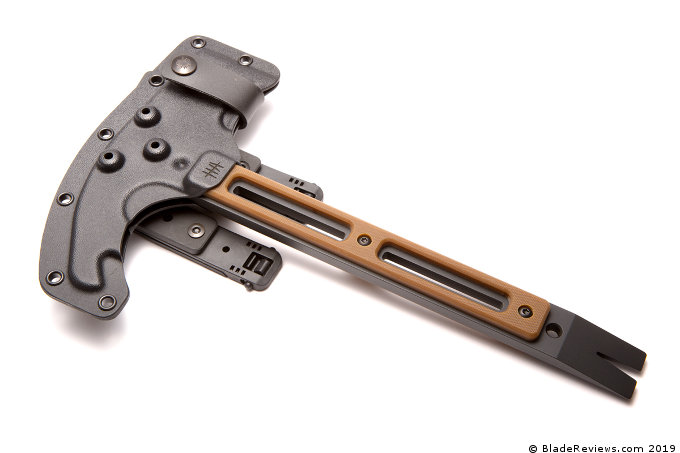
The second option is the Kydex ‘Speed Scabbard’. As the name implies, it is designed for quick access. The scabbard only holds the head, leaving the handle exposed for release. This works by pulling downward with a back sweeping movement, releasing the blade then the claw. The motion is easy and natural.
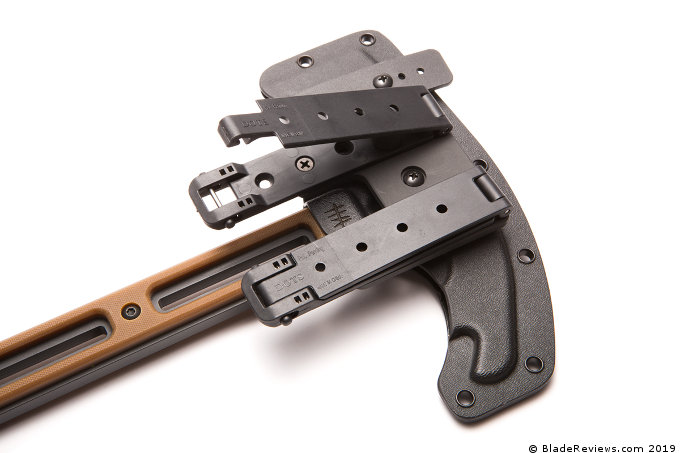
Likewise, the head is stowed by putting the claw in first and then clipping in the rest by pushing upward. Retention is great and further enforced by a rubberized snap ensuring a secure closure. The system attaches via double MOLLE-loks.
Hardcore Hardware Australia MFE01 Rhino Review – Final Thoughts
The MFE01 Rhino is a comprehensive tool cooperatively designed with professionals for their use. The robust build quality, premium materials and useful tool set make it a durable companion capable of taking on a wide variety of hard-use tasks. Two carry options further extend the versatility of this moderately compact yet powerful package.
While finishing details are much less important than utility on any serious gear, the company has still paid good attention to the fit and finish. All in, Hardcore Hardware Australia has created an interesting variation of the modern tomahawk, adding positively to the overall offerings in this category.
No products found.
Editor: I recommend purchasing the Hardcore Hardware Rhino at Amazon or BladeHQ. Thanks for reading.
Additional Specifications
- Steel: D2
- Finish: PTFE (Teflon) Available in Black or Tan
- Total Length 12.6″ (320 mm)
- Total Width: 6.7″ (170 mm)
- Thickness: .315″ (8 mm)
- Weight: 27oz (765 g)
- Handle: Brown or Black G10
- Country of Origin: Australia
Sheaths:
- 1000 Denier Cordura®
- Speed Scabbard
- MOLLE Compatible
The Rhino is distributed by sharpernow.com in the US.
For more on Hardcore Hardware Australia, visit http://www.hardcorehardware.com.au
